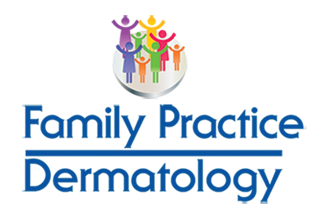Our areas of practice include:
Acne
Acne is the term for the blocked pores, pimples, and deeper lumps that can appear typically on the face, neck, chest, back, shoulders and upper arms. Acne is the most common skin disease in the country, affecting mostly teenagers, although patients of all ages can suffer from this condition. Treatment for acne may include topical medications, antibiotics, and Accutane.
Accutane
Moderate to severe acne.
Actinic Keratosis Treatment
Actinic keratoses (AKs) are lesions on the surface layer of the skin (epidermis) caused by chronic exposure to sunlight, most commonly appearing on the face, neck, arms and hands. Lesions range in size and may be yellow, brown, red or violet, smooth, wrinkled or furrowed. They may signal the onset of skin cancer and should be promptly treated.
Age Spots
Age spots, also called liver spots, are flat brown patches on the skin that have darkened in color after exposure to sunlight or ultraviolet light. They are commonly seen in people over the age of 40 on areas of skin that are frequently exposed to sunlight, such as the hands, shoulders, forearms, face and forehead. Age spots may look unattractive, but are usually painless and harmless.
Atopic Dermatitis
Atopic dermatitis, a form of eczema, is a chronic skin disorder that causes dry, itchy skin and often results in a red rash on the face, neck, arms and legs. It is most common in babies and children, although the actual cause is unknown. It is usually mild and can go away on its own, or can be managed through moisturizing lotions, avoiding harsh soaps and controlling scratching.
Complexion Care
Care of oily, dry, sensitive and sun damaged skin.
Cyst Removal
Eczema Treatment
Eczema is a group of inflamed skin conditions that result in chronic itchy rashes and affect about 15 million people in the US, including 10-20 percent of all infants. Symptoms often include dry, red, itchy patches on the skin which break out in rashes when scratched. Treatment involves the restriction of scratching, use of moisturizing lotions or creams, cold compresses and anti-inflammatory creams and ointments.
Folliculitis
Folliculitis is the inflammation of hair follicles that can occur anywhere on the skin as a result of the bacteria Staphylococcus aureus, which enters the body through tiny breaks in the skin. Symptoms of folliculitis include itchy skin, rash/reddened areas of skin and pustule development. Proper skin care, topical antiseptics and over-the-counter antibiotics are common treatments for folliculitis.
Hair Loss
Hair loss can occur as a result of aging, heredity, medications or an underlying medical condition, and can affect men and women of all ages. It may leave you with pattern baldness, patchy spots or thinned hair. Most people are troubled by this undesired change to their appearance and seek treatment in the form of medication, wigs, hair transplant or scalp reduction surgery.
Herpes
Herpes is a common viral infection that causes small blisters to appear on the skin of the face or genital area after encountering skin or sexual contact with an infected person. Patients may develop primary infections that heal completely or recurrent infections that come and go over time after exposure to certain triggers. While there is no cure for recurring herpes, treatments such as anti-viral medications can relieve symptoms during an outbreak.
Hirsutism
Hirsutism is a hormonal condition involving excessive body hair in women that develops due to high levels of male hormones called hirsutism. This condition may develop in patients with polycystic ovary syndrome, Cushing’s syndrome or from certain medications. Treatments aim to remove body hair through electrolysis or laser therapy and prevent additional growth through oral contraceptives or anti-androgens.
Moles
Moles and other birthmarks are benign pigmented spots or patches of skin that are usually brown or black in color. Though most moles are harmless, they may eventually develop into cancer.
Nail Disease
There are several different diseases that affect the nails, often as a result of a fungal or bacterial infection. Ingrown toenails involve the corners of the nails digging into the surrounding soft tissue, causing irritation and swelling, while fungal infection affects the toenails as a result of exposure to a warm, moist environment. Treatment for nail diseases may include oral or topical medications.
Pityriasis Rosea Treatment
Pityriasis rosea is a skin rash that appears on the chest, abdomen or back and resembles the shape of a tree as it grows. This condition most often affects patients between the ages of 10 and 35, although the specific cause is unknown. Most cases of pityriasis rosea clear up on their own within four to six weeks.

